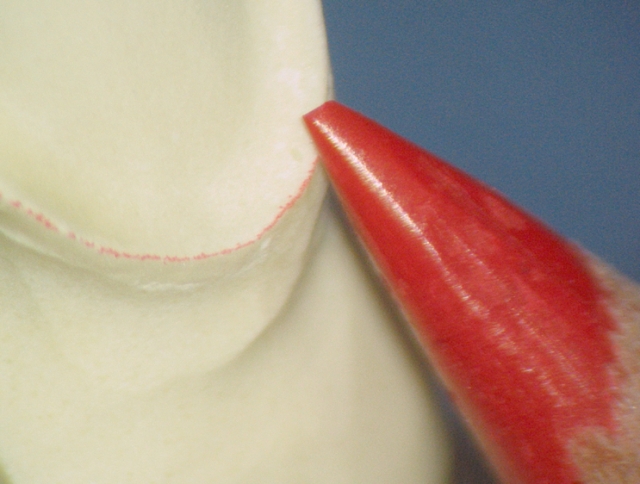Milled vs. Waxed-and-Pressed Restorations: Which Is Better?
By Greggory Kinzer on January 7, 2017 |What is the difference between an all-ceramic restoration that is milled and one that is waxed and pressed? (Figures 1 and 2)


The answer is easy: One of them is milled and one is pressed. If, on the other hand, your question is which one of them is better, you first have to realize that for all intents and purposes, the ceramic is the same. It must be noted that if the restoration was to be used in its “monolithic” form, the milled restoration has an esthetic edge over the restoration that is pressed.
The reason for this is that many of the all-ceramics can be milled using a “muli-layer” block that can provide different esthetic properties (i.e. translucency / opacity) to different parts of the restoration. In contrast, a pressed restoration will have the same esthetic properties throughout. In order to create the illusion of translucency with a monolithic pressed material, external ceramic stains will need to be fired onto the ceramic with these restorations.
The real question that most dentists want to know is which restoration “fits” better? (Figure 3)

Do milled or waxed-and-pressed restorations fit better?
As described by McLean and Von Fraunhofer, clinically acceptable marginal gaps are those that are < 120 micrometers.1 However, according to the American Dental Association Specification No. 8, the marginal fit of cemented restoration should be in the range of 25-40 micrometers to allow for luting cement thickness2; however, this range is seldom achievable.3
So, knowing that no restoration fits perfectly, the answer will vary depending on how well the margin of the preparation is refined and captured either digitally or with conventional impression material. If the margin is ideally prepared (smooth with no imperfections) and ideally captured, then both the milled restoration and the waxed-and-pressed restoration will have an equally good fit. (Figure 4)

If on the other hand the margin that is prepared and/or captured is less than ideal, then the waxed-and-pressed restoration will have a better fit. (Figure 5)

This is due to the fact that the burs used in milling the restorations are not small enough to accommodate the minor discrepancies that can be present at the cavosurface margin. If a margin is less than ideal and the restoration is waxed and pressed, the wax can be carved and pressed into these small defects in the margin, thus enabling these restorations to have a better fit. (Figures 6 and 7)


The reality is, both restorations can be used successfully, but the difference in fit is really in the hands of the clinician if milled restorations are used.
Resources
- McLean J. The estimation of cement film thickness by an in vivo technique. British dental journal 1971;131:107-111.
- Association AD. ANSI/ADA Specification No. 8 for zinc phosphate cement. Guide to dental materials and devices 1970;5:1970-1971.
- May KB, Russell MM, Razzoog ME, Lang BR. Precision of fit: the Procera AllCeram crown. The Journal of prosthetic dentistry 1998;80:394-404.
Free Dental Lesson: Restorative Materials
Better understand the material choices available to you. This free course will help you begin to think like your technician so you can help your technician think like you when working on restorative cases.
WATCH NOW